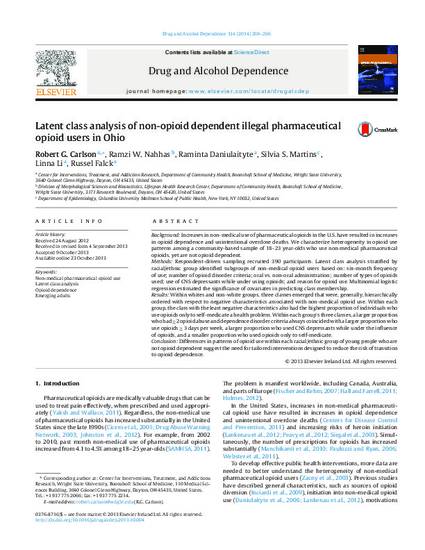
Background
Increases in non-medical use of pharmaceutical opioids in the U.S. have resulted in increases in opioid dependence and unintentional overdose deaths. We characterize heterogeneity in opioid use patterns among a community-based sample of 18–23 year-olds who use non-medical pharmaceutical opioids, yet are not opioid dependent. Methods
Respondent-driven sampling recruited 390 participants. Latent class analysis stratified by racial/ethnic group identified subgroups of non-medical opioid users based on: six-month frequency of use; number of opioid disorder criteria; oral vs. non-oral administration; number of types of opioids used; use of CNS depressants while under using opioids; and reason for opioid use. Multinomial logistic regression estimated the significance of covariates in predicting class membership. Results
Within whites and non-white groups, three classes emerged that were, generally, hierarchically ordered with respect to negative characteristics associated with non-medical opioid use. Within each group, the class with the least negative characteristics also had the highest proportion of individuals who use opioids only to self-medicate a health problem. Within each group's three classes, a larger proportion who had ≥2 opioid abuse and dependence disorder criteria always coincided with a larger proportion who use opioids ≥ 3 days per week, a larger proportion who used CNS depressants while under the influence of opioids, and a smaller proportion who used opioids only to self-medicate. Conclusion
Differences in patterns of opioid use within each racial/ethnic group of young people who are not opioid dependent suggest the need for tailored interventions designed to reduce the risk of transition to opioid dependence.
Available at: http://works.bepress.com/robert_carlson/150/
